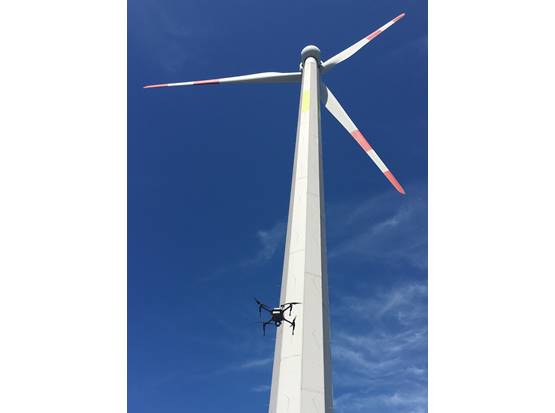Operational modal analysis of vibrating structures with mobile measurement platforms
Abstract
Buildings such as skyscrapers, bridges, towers, wind turbines, cranes are stimulated to vibrate by wind or by the vehicles crossing them. Increasing loads of wind turbines and higher speeds in railway traffic lead to greatly increased dynamic loads on the structures. For this reason, such objects require regular metrological investigations of the individual vibration behavior. Positions or aligned to fixed measuring positions on the structure. For the vibration excitation of the structure, defined force excitations are entered into the structure, which are measured, so that it is an experimental modal analysis.background
Currently, metrological investigations of vibrating structures are carried out within the framework of Structural Health Monitoring (SHM) by measuring a physical vibration quantity in one or more directions of a global Cartesian coordinate system at individual measuring positions. In order to carry out these measurements, the necessary sensors are installed according to a measuring point plan at fixed positions or aligned to fixed measuring positions on the structure. For the vibration excitation of the structure, defined force excitations are entered into the structure, which are measured, so that it is an experimental modal analysis.
Innovation / Solution
The invention concerns the measurement-based system identification of vibration eigenfrequencies and vibration eigenmodes or operational vibration modes and their associated damping of elastomechanical structures in civil engineering. One or more sensors for vibration measurement are aligned and positioned by an unmanned aerial vehicle (UAV) in such a way that relative vibrations between the dynamically moving structure and the dynamically moving UAV are measured. In order to identify the vibration behavior of the construction alone, the relative vibrations are adjusted for the disturbing flight movements of the UAV. For this purpose, the on-board sensors of the UAV as well as additional acceleration and rotation rate sensors installed on the sensors for vibration measurements. An additional digital building model can improve the accuracy of the vibration analysis by taking the shape of the structure into account in the measurement signal. During a measurement, the UAV positions itself independently at a measurement position. Several measurements at different positions of the same or different constructions are linked by autonomous connecting flights. The eigenmodes of vibration of the construction are determined by an autonomous takeoff with simultaneous continuous measurement of all subcomponents of the construction. The continuously recorded vibration signal is assigned to individual areas of the construction by linking it to GPS positions. Periodic repetitions of these measurements allow conclusions to be drawn about changes in the load-bearing behavior of the structure.Benefits
fields of application
On all structures capable of vibrating in the field of civil engineering.You can close this window. You can find your search results in the previous window




